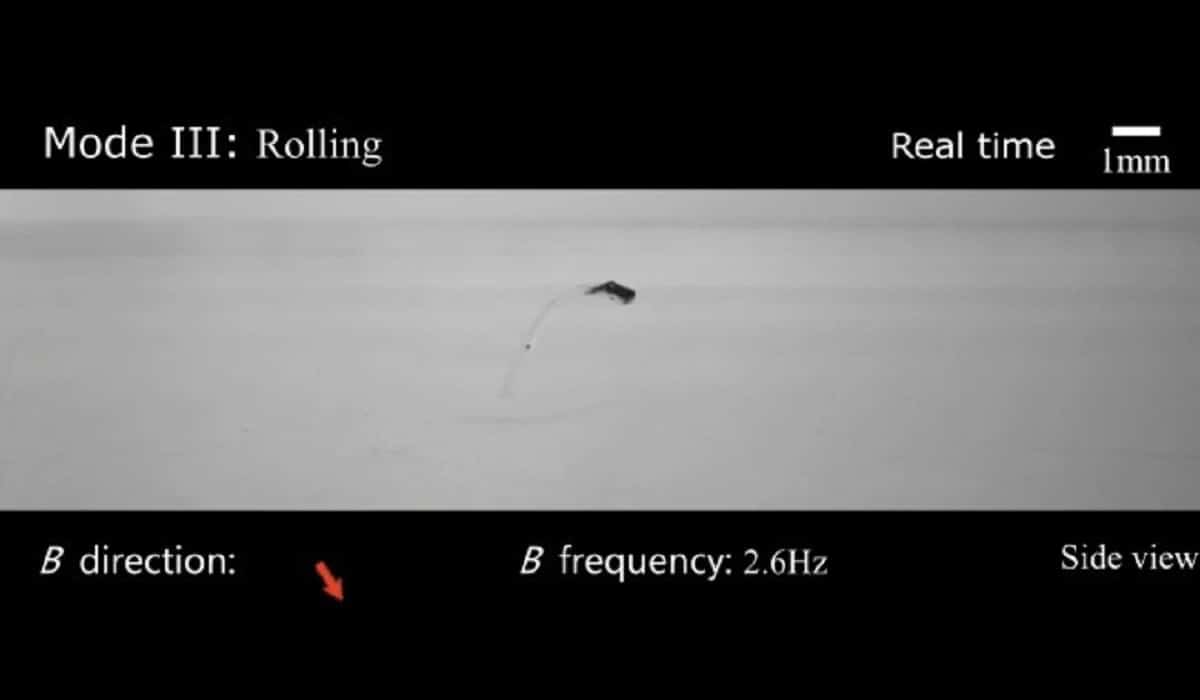
wormtail
A team of researchers in Shenzhen, China, created a robot worm which could enter the human body and travel along the blood vessels and connect to neurons. According to a series of videos published by the research team in conjunction with a study in the scientific journal Advanced Functional Materials earlier this month, the smart little robot worm qthey called iRobot, it can jump over a hedge, swim in a tube, or sneak into a space half its width.
According to the report, the mycorobot 1mm by 3mm does not work with chips or batteries, but with an external magnetic field generator. The scientists based their creation on an ancient form of black magic from southern China, known as "Gu," a small poisonous worm-like creature that could be grown in a pot and used to control a person's mind.
XuTiantian, scientist in charge of the project at Shenzhen Institute of Advanced Technology at the Chinese Academy of Sciences, said:
"In a way, he is similar to Gu." “But our goal is not to develop a biological weapon. It's the opposite "
Modification of magnetic fields external generator allows researchers to twist the robot's body in different ways and get a wide range of movements.
According to the report, these robots can also sneak through spaces using infrared radiation to contract their bodies by more than a third.
The worm's body made of a hydrogel transparent temperature sensitive it also gives you the ability to change color in different environments. A video shows that when the robot worm is immersed in a cup of water at room temperature and it becomes almost invisible.
Chinese robot worms also have a "head" made of a magnet made of a neodymium-iron-boron alloy and a "tail" made of a special composite material.
Xu Tiantian believes that they will be particularly useful to doctors in the future, for example, by being injected into the body and delivering a package of drugs to a specific area, such as a tumor.
This would limit the effect of the drug to areas where it is needed and reduce the risk of side effects, and the robotic worm could leave the body once its task is completed.
Currently, brain implants can only be inserted through a surgical procedure and have a limited capacity for integration with neurons, which means that they can only perform a few simple tasks.
But the new small robots could be implanted in the brain, because their great mobility and transformative capacity allows them to survive in this difficult environment where blood flows are fast and blood vessels are small.
Xu Tiantian said that could "function as an implant for the brain-computer interface" which would allow direct communication with a computer without the need for a keyboard or even a screen.
According to the report, the researcher believes it would work by wearing a transmitter that would convert the signals external into an electrical pulse and would connect to brain cells to stimulate activities that are not possible with current technology.
During the procedure, the patient must lie down on an MRI-type machine that generates the magnetic field necessary to control the robots.
Xu Tiantian says that:
New technology can be misused by turning it into a weapon. However, the researcher said there were still significant obstacles to its effectiveness.
In fact, for the misuse of this technology to be made, a powerful electric field generator with a long effective range would have to be built to operate the worm robots.
Furthermore, it would also be very difficult to send the microbots to their designated location without the cooperation of the person they are in, as they have to sit or lie down and remain perfectly still while the robots move on the body.
Source: https://www.scmp.com